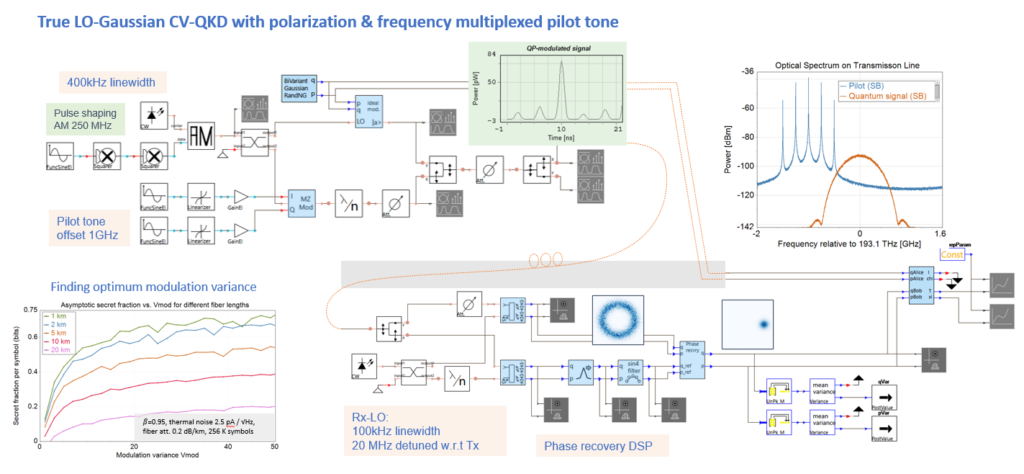Even during hard lock-down times, when researchers may have reduced access to their labs, the quantum progress should go on. An option to conduct quantum experiments from home is provided by simulation tools like VPItransmissionMaker Optical Systems & VPItoolkit QKD (https://www.vpiphotonics.com/Tools/QKD/). Based on a solid modeling approach, we can simulate complex optical systems for QKD applications, such as this Gaussian CV-QKD setup with a polarization and frequency multiplexed pilot tone as phase reference.
On Alice’s side, the laser power is split on two arms: One arm is shifting the emission frequency by 1 GHz using Mach-Zehnder modulators. This will be the pilot tone. The other arm is modulating the actual QKD signal onto the laser pulses. Both arms are joined into the same fiber but on orthogonal polarizations. The two signals – the QKD signal and the pilot tone – are measured by a self-calibrating polarization-diverse receiver. Phase recovery is accomplished using a digital signal processing algorithm. This is necessary, as the transmitter and receiver lasers have nonzero linewidth and are detuned by 20 MHz in this example. Finally, parameter estimation and secret fraction calculation are performed, which allows us to investigate, for example, how the secret fraction depends on the modulation variance and the fiber length.
